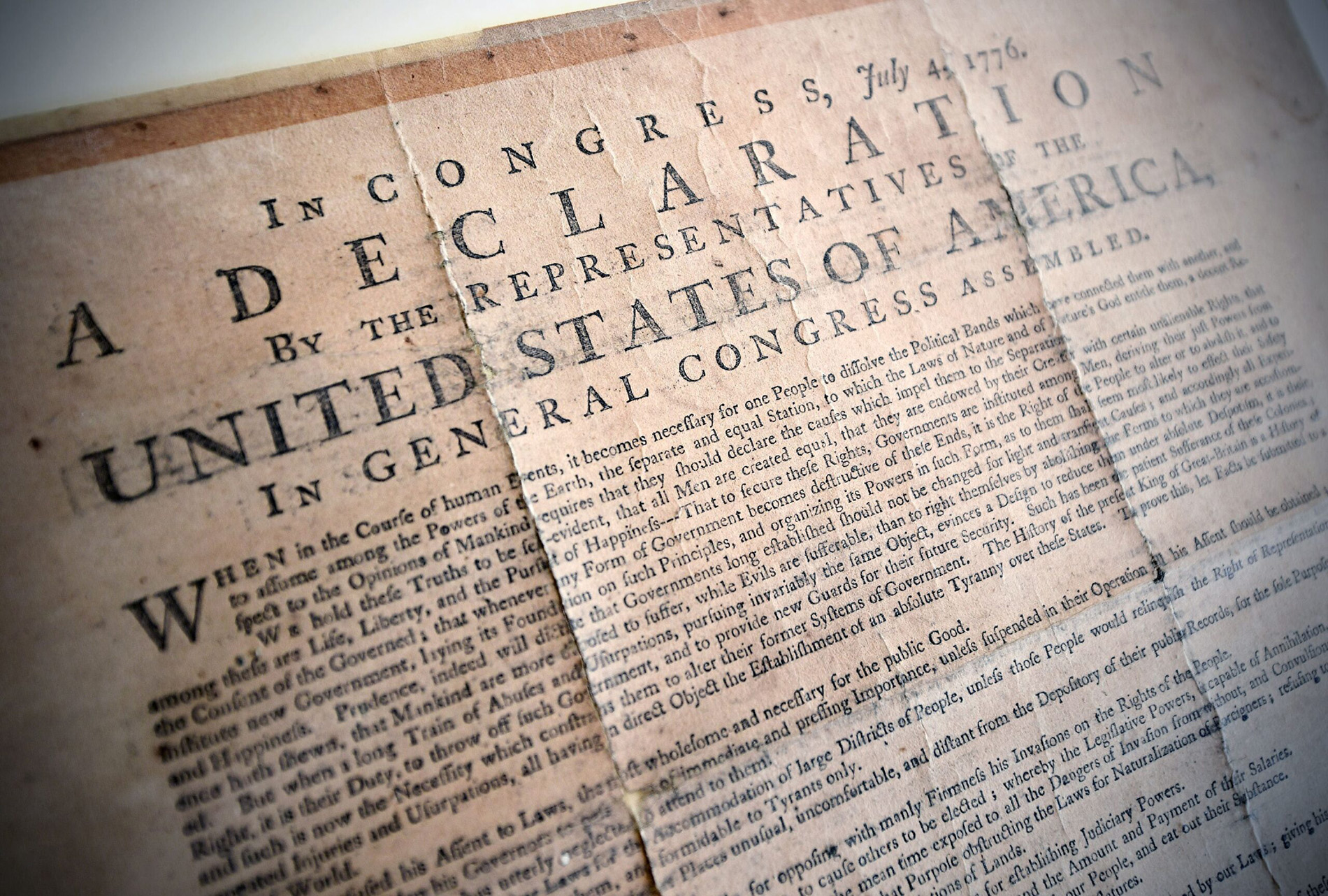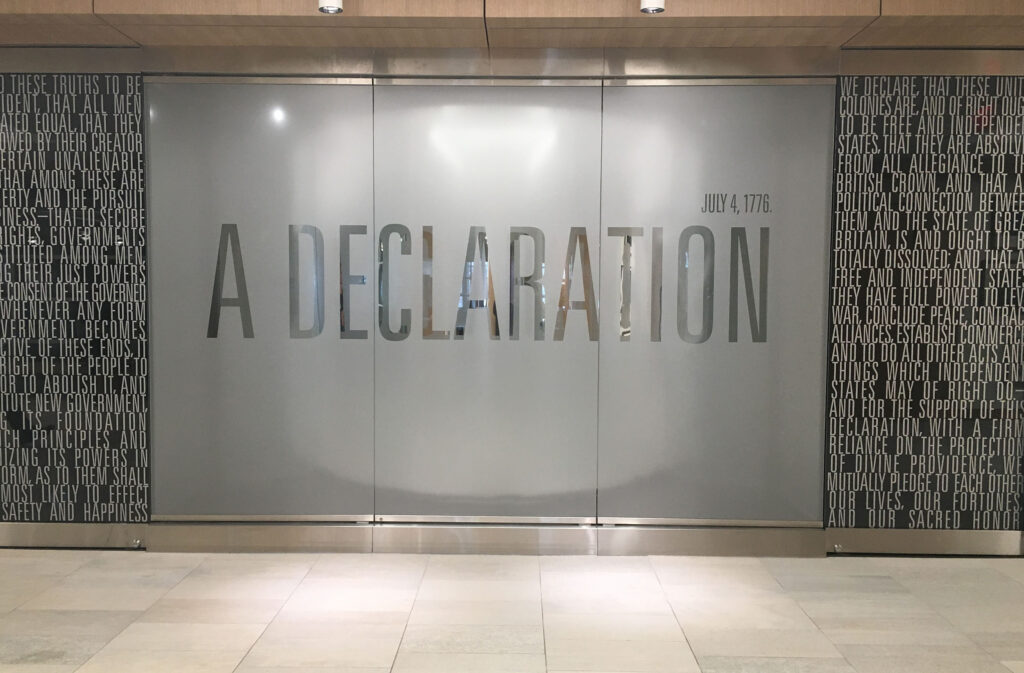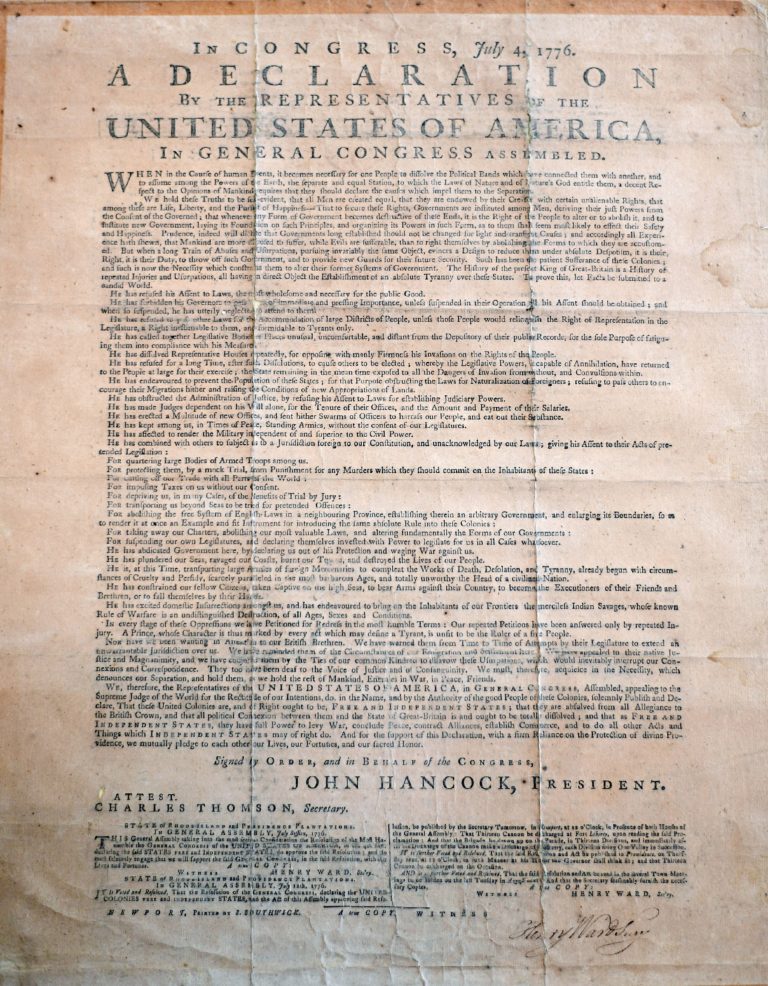
Declaration of Independence Exhibition Now Open in Olin Library
Southwick Broadside
University Libraries’ Declaration of Independence exhibition was unveiled on May 1, 2018, during the ribbon-cutting ceremony celebrating the completion of the John M. Olin Library Transformation project. The exhibition spotlights a rare broadside copy of the Declaration printed by Solomon Southwick in Newport, Rhode Island, and dated July 12, 1776. The exhibition also includes a digitized replica of the Declaration, with a touchscreen featuring hot spots that viewers can tap to learn more about the broadside. The screen allows viewers to see both sides of the document.
Only seven copies of the Southwick broadside exist. A private collector sold the Southwick broadside for $750 in 1941; the history of the broadside before 1941 is unknown. The Newman Family acquired the broadside and displayed it on a wall in their home for more than 60 years before donating it to University Libraries in 2015. The Declaration is on permanent display in the library, although it will be removed periodically for conservation purposes.
An Interview with the Curator of Rare Books
We caught up with Cassie Brand, University Libraries’ curator of the Rare Book Collections, for a Q&A about this historical treasure.
What’s special about University Libraries’ Declaration of Independence? What makes it rare? Our copy is one of the original Declarations of Independence, which was printed before the official handwritten copy (the one on display in the National Archives) was signed. It is also the first copy of any of the Declarations to have a signature.
Can you tell us about the chamber in which it’s displayed? Everything about the chamber was built specially for keeping the Declaration in the best condition possible. The lighting is very dim, and the case has its own temperature and humidity control. We are able to monitor the temperature and humidity to ensure the document’s safety.
Did any conservation work have to be done to the document? Was it cleaned? If so, what was that process like? If you take a close look at the Declaration and compare it to the digitized touchscreen version that’s in the chamber, you’ll be able to see some of the conservation work that was done. There was tape around the edges that was removed, and the small holes along where the document had been folded have been filled in and colored to match the original paper. It was cleaned, first with dry techniques, like a soft brush or a rubber sponge. After they got as much dirt off as possible, the conservators gave the Declaration a bath! They submerged it in a water/alcohol mixture to reduce the staining and discoloration that had occurred over time.
Are there any idiosyncrasies or printing quirks in the text of the document? What can you tell us about the print quality? Copies of the Declaration were printed as quickly as possible because they wanted to spread the news. Because of this, the first printing has a typo near the bottom of the document: it was printed on July 12, but incorrectly dated July 13. Our copy is the second printing with the correct date. Broadsides like these weren’t printed to last and because they were printed quickly, the printer most likely used materials he had at the ready, rather than going out to get the highest quality of the paper.
Is there any speculation as to where the document was prior to 1941 when it was offered for sale by a private collector? It’s difficult to speculate because there are so many possibilities! It could have been handed down in a family from generation to generation, or possibly locked away in a chest and discovered after years. I like to think that there was a discovery involved. The small holes along the old folds make me think that they had been folded for many years.
Please see the Library Hours page for the current Declaration of Independence open exhibition hours.


